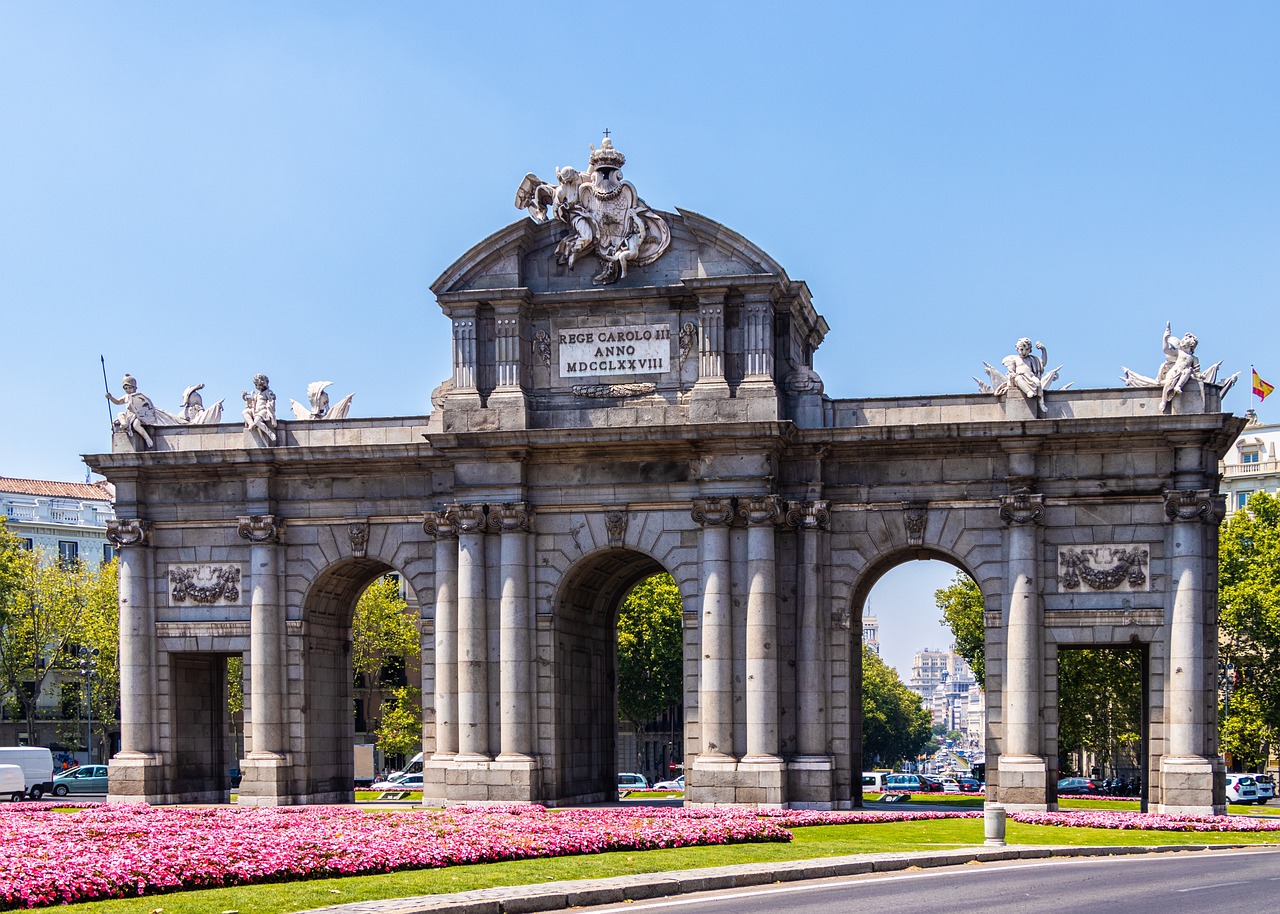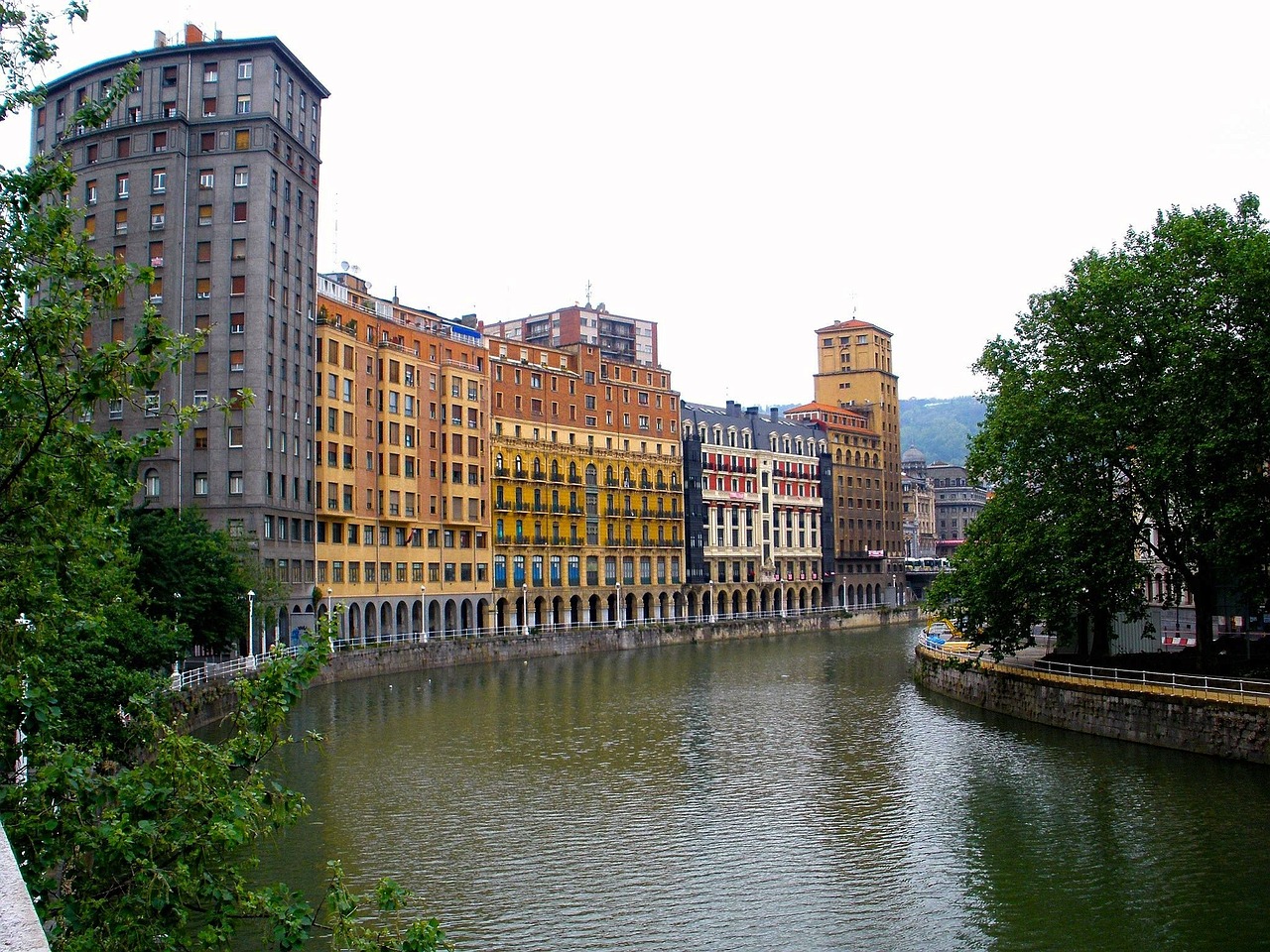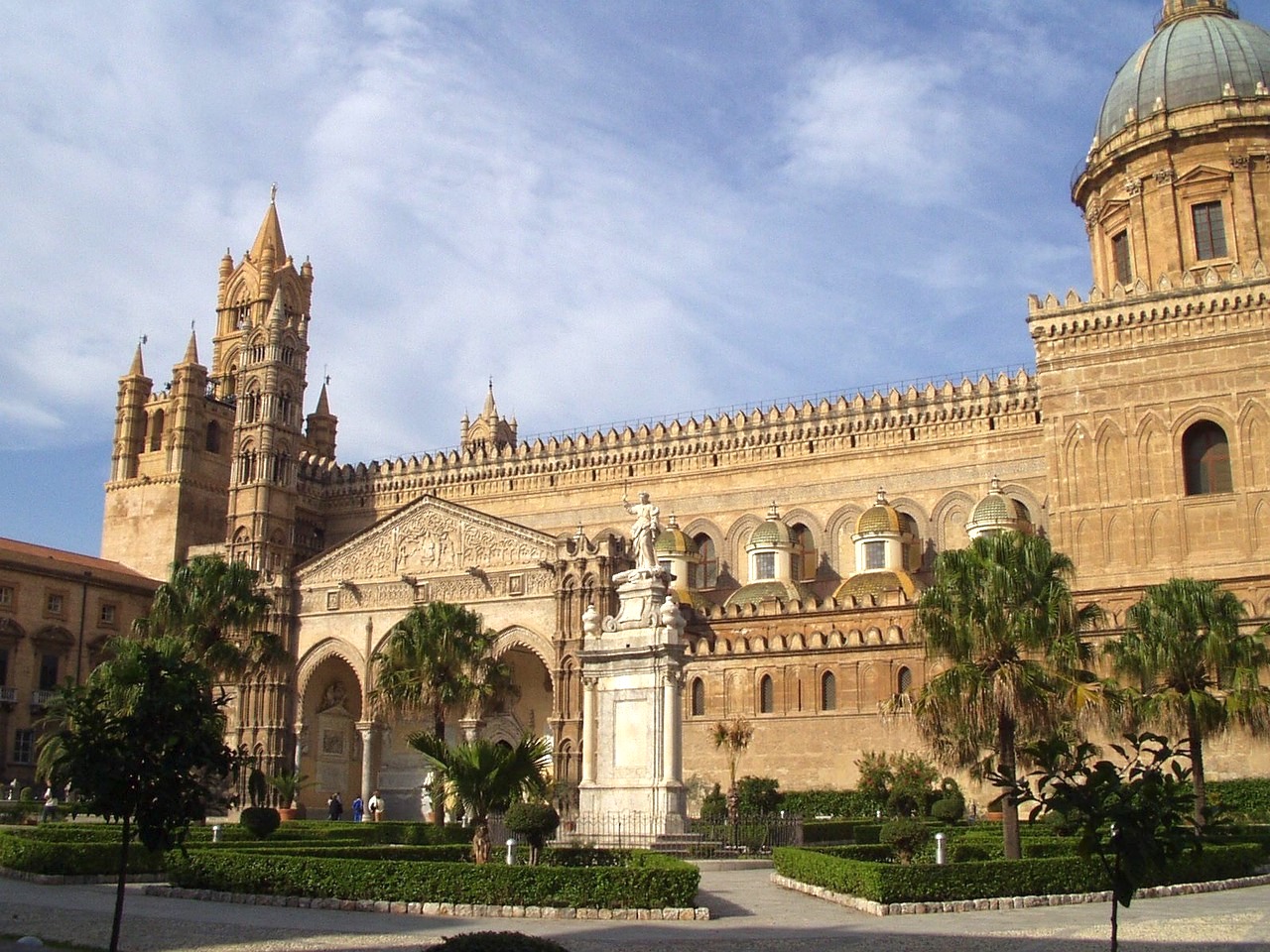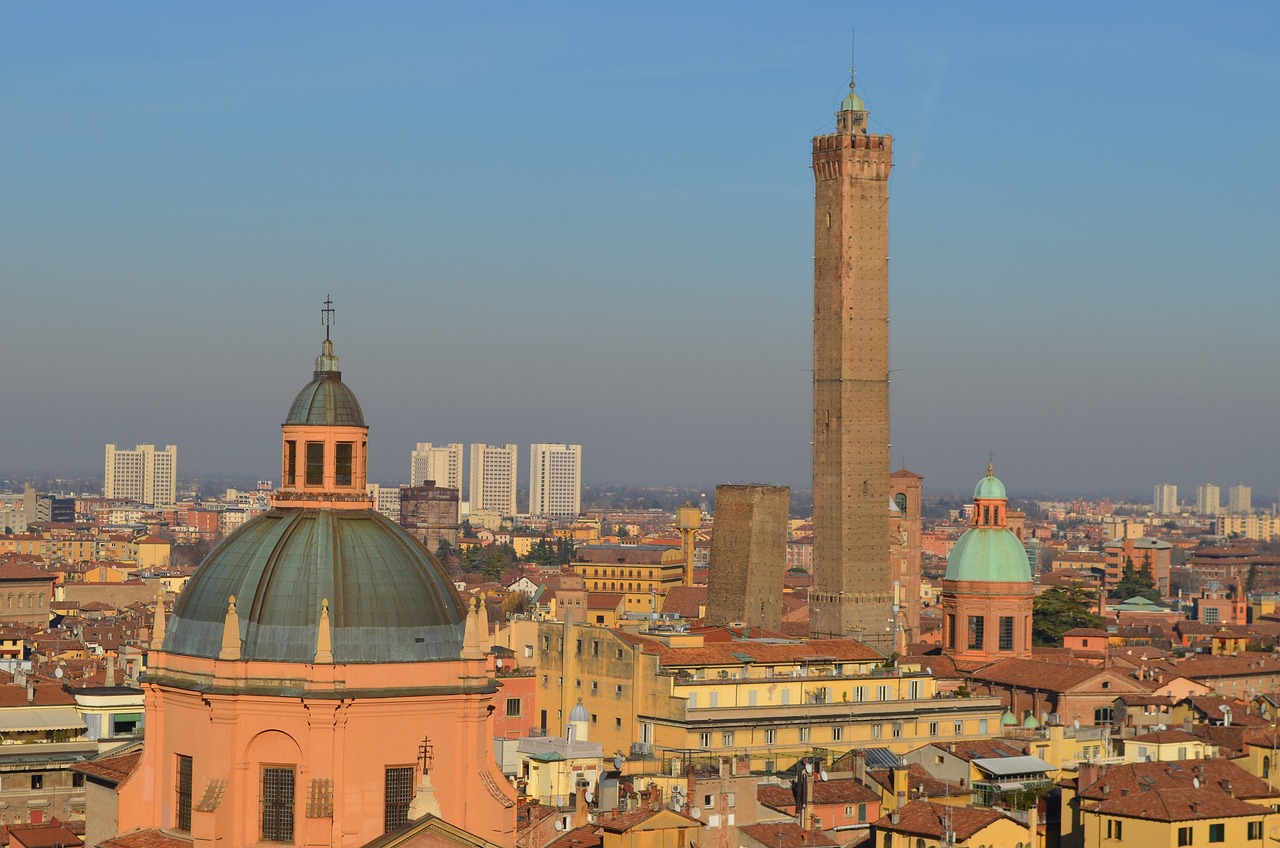Madrid is the capital city of Spain, located in the center of the country. It is the largest city in Spain and the second-largest city in the European Union after Berlin. Madrid is known for its rich history, art, culture, architecture, and cuisine. It is home to several world-famous museums, including the Prado Museum, the Reina Sofia Museum, and the Thyssen-Bornemisza Museum, which feature masterpieces by artists such as Picasso, Goya, and Velazquez. The city is also famous for its lively nightlife, with numerous bars, clubs, and restaurants open until the early hours of the morning. Madrid is a popular tourist destination and a hub for international business and finance.
Short History
The history of Madrid dates back to the 9th century, when the Moors established a fortress on the site of the current city. The area was later conquered by the Christian Kingdom of Castile in the 11th century and was developed into a thriving commercial center. In the 16th and 17th centuries, Madrid became the capital of Spain and the seat of the Spanish monarchy, which led to a period of significant growth and cultural development.
During the Spanish Civil War in the 1930s, Madrid played a significant role as the center of the Republican resistance against General Franco’s Nationalist forces. After the war, Madrid experienced a period of economic growth and modernization, and the city became an important center of international business and finance.
Today, Madrid is a vibrant and cosmopolitan city with a colorful cultural heritage and a modern outlook. It is home to numerous museums, art galleries, theaters, and music venues and hosts a variety of cultural events and festivals throughout the year. The city continues to be an important center of politics, business, and finance, both in Spain and in the wider European Union.
Architecture
The architecture of Madrid is a mix of styles, reflecting the city’s history and cultural heritage. The city is known for its impressive collection of historic buildings, including churches, palaces, and government buildings.
One of the most famous buildings in Madrid is the Royal Palace of Madrid, which is the official residence of the Spanish royal family. The palace was built in the 18th century in the neoclassical style and features grand halls, impressive staircases, and beautiful gardens.
Another important landmark in Madrid is the Puerta de Alcalá, a monumental gate that was built in the 18th century as one of the city’s main entrances. The gate is a prime example of the neoclassical style and is considered one of the most important monuments in the city.
Madrid is also home to several beautiful churches, such as the Almudena Cathedral, which is a stunning example of contemporary architecture. The church was completed in 1993 and features a mix of Gothic and modernist styles.
Other notable buildings in Madrid include the Gran Via, which is one of the city’s main thoroughfares and is lined with impressive Art Nouveau and Art Deco buildings, and the Plaza Mayor, a beautiful square that dates back to the 16th century and is surrounded by historic buildings with striking architecture.
Museums and Galleries
Madrid is known for its impressive collection of museums and galleries, which showcase a diverse range of art and cultural artifacts from across the world. Here are some of the most interesting museums and galleries in Madrid:
- Prado Museum: The Prado Museum is one of the most famous art museums in the world and is home to an impressive collection of European art from the 12th to the 19th centuries. The museum features masterpieces by artists such as Goya, Velázquez, and El Greco.
- Reina Sofia Museum: The Reina Sofia Museum is a contemporary art museum that houses an extensive collection of Spanish art from the 20th century. The museum is famous for its collection of works by Picasso, including his iconic painting “Guernica.”
- Thyssen-Bornemisza Museum: The Thyssen-Bornemisza Museum is a private art museum that features a collection of over 1,000 works of art from the 13th to the 20th centuries. The collection includes works by artists such as Van Gogh, Monet, and Rembrandt.
- National Archaeological Museum: The National Archaeological Museum is dedicated to the history of Spain and features artifacts from prehistoric times to the 19th century. The museum’s collection includes ancient sculptures, jewelry, and pottery.
- Royal Palace of Madrid: The Royal Palace of Madrid is the official residence of the Spanish royal family and is open to the public. The palace features an extensive collection of artwork, including paintings by Goya and Caravaggio, as well as historic artifacts such as tapestries and furniture.
- CaixaForum Madrid: CaixaForum is a contemporary art museum and cultural center that hosts a variety of exhibitions, concerts, and cultural events. The building itself is a work of art, featuring a striking vertical garden and a modernist design.
These are just a few of the many museums and galleries that Madrid has to offer, and each one offers a unique and fascinating insight into the city’s valuable cultural heritage.
Landmarks and Monuments
Madrid is home to many landmarks and monuments that reflect its history and cultural heritage. Here are some of the most interesting landmarks and monuments in Madrid:
- Puerta del Sol: Puerta del Sol is a bustling square in the center of Madrid and is known for its clock tower and the statue of the bear and strawberry tree, which is the symbol of the city.
- Plaza Mayor: Plaza Mayor is a beautiful square that dates back to the 16th century and is surrounded by historic buildings with striking architecture. The square is home to many restaurants and cafes and is a popular spot for people-watching.
- Royal Palace of Madrid: The Royal Palace of Madrid is the official residence of the Spanish royal family and is a beautiful example of neoclassical architecture. The palace is open to the public and features an extensive collection of artwork, including paintings by Goya and Caravaggio.
- Almudena Cathedral: Almudena Cathedral is a stunning example of contemporary architecture and features a mix of Gothic and modernist styles. The cathedral was completed in 1993 and is dedicated to the Virgin Mary.
- Retiro Park: Retiro Park is a beautiful public park in the heart of Madrid and is home to many landmarks and monuments, including a beautiful lake, the Crystal Palace, and the Monument to Alfonso XII.
- Temple of Debod: The Temple of Debod is an ancient Egyptian temple that was gifted to Spain in the 1960s. The temple was dismantled and rebuilt in Madrid and is now open to the public as a museum.
Madrid is a city filled with a multitude of fascinating landmarks and monuments, each providing a unique insight into the splendid cultural heritage of the city. Whether it’s exploring the bustling Puerta del Sol or marveling at the grandeur of the Royal Palace of Madrid, visitors are sure to be captivated by the many fascinating attractions that the city has to offer.
Parks and Green Spaces
Madrid is home to many beautiful parks and green spaces that offer a tranquil escape from the hustle and bustle of the city. Here are some of the most popular parks and green spaces in Madrid:
- Retiro Park: Retiro Park is a 125-hectare park in the heart of Madrid and is home to many gardens, fountains, and sculptures. The park also features a beautiful lake, where visitors can rent rowboats and enjoy the scenery.
- Casa de Campo: Casa de Campo is the largest park in Madrid and covers over 1,700 hectares. The park is home to many walking trails, picnic areas, and sports facilities, including a public swimming pool and a golf course.
- El Capricho Park: El Capricho Park is a hidden gem located in the northeast of Madrid. The park is home to many beautiful gardens, fountains, and sculptures and is the perfect place to relax and unwind.
- Juan Carlos I Park: Juan Carlos I Park is a large park located in the northeast of Madrid and is home to many walking and cycling trails, as well as several lakes and gardens. The park also features an outdoor concert venue and a modern sculpture garden.
- Madrid Rio: Madrid Rio is a large park that runs along the banks of the Manzanares River and is home to many walking and cycling trails, as well as several playgrounds and sports facilities. The park also features several bars and restaurants, making it the perfect place to spend a lazy afternoon.
These parks and green spaces offer a beautiful respite from the city and are perfect for picnics, leisurely walks, and outdoor activities.
Beaches
Madrid is not located near any beaches as it is situated in the middle of the Iberian Peninsula. The closest beaches to Madrid are located on the east coast of Spain, such as Valencia, Alicante, and Castellón. These areas are known for their beautiful beaches and clear waters, making them popular destinations for both locals and tourists alike. Some of the most popular beaches near Madrid include Playa del Cabo de las Huertas, Playa del Postiguet, and Playa de la Malvarrosa. While they are not located directly in Madrid, these beaches are easily accessible by train or car and are worth the trip if you’re looking to soak up some sun and enjoy the beautiful Mediterranean Sea.
Shopping Districts
Madrid is a shopper’s paradise, with many districts offering a diverse range of shops and boutiques. Here are some of the most popular shopping districts in Madrid:
- Gran Via: Gran Via is one of Madrid’s most famous shopping streets and is home to many high-end boutiques, department stores, and designer shops. The street is also home to several cinemas and theaters.
- Salamanca: Salamanca is a wealthy neighborhood in Madrid that is known for its high-end shopping. The district is home to many designer shops, luxury boutiques, and upscale department stores, as well as several fine dining restaurants.
- Chueca: Chueca is a vibrant and trendy neighborhood that is home to many independent shops and boutiques. The district is known for its unique fashion, jewelry, and accessory stores, as well as its eclectic mix of cafes and restaurants.
- Malasana: Malasana is a bohemian neighborhood that is home to many vintage and second-hand shops, as well as several independent fashion boutiques. The district also features many street art murals and trendy cafes.
- Centro Comercial Principe Pio: Centro Comercial Principe Pio is a large shopping mall located in the center of Madrid. The mall is home to many high-street shops, as well as several cinemas, restaurants, and cafes.
- El Rastro flea market: The El Rastro flea market is also a must-visit destination for shoppers looking for unique souvenirs and handmade goods.
Madrid is home to a variety of shopping districts that offer something for every taste and budget.
In Madrid, shopping is a popular pastime, and the city offers a range of shopping districts that cater to all tastes and budgets. From the luxury boutiques to the trendy shops, there is something for everyone. Whether you’re searching for high-end fashion or unique souvenirs, Madrid’s shopping districts are sure to provide an enjoyable and satisfying shopping experience.
Food and Drink
Madrid is known for its delicious cuisine, with many traditional dishes and local specialties to try. Here are some of the must-try food and drinks in Madrid:
- Cocido Madrileño: Cocido Madrileño is a hearty stew made with chickpeas, vegetables, and meats such as beef, pork, and chorizo. It is often served in three courses, with the broth first, then the vegetables, and finally the meats.
- Huevos Rotos: Huevos Rotos, which translates to “broken eggs,” is a simple but tasty dish made with fried eggs and potatoes. It is often topped with jamón (cured ham) or chorizo.
- Calamares a la Romana: Calamares a la Romana is a popular Spanish appetizer made with deep-fried squid rings that are lightly battered and seasoned with lemon and salt.
- Churros con Chocolate: Churros con Chocolate is a classic Spanish dessert made with long, thin fried doughnuts served with a cup of thick, rich hot chocolate.
- Vermouth: Vermouth is a popular aperitif in Madrid, often served with a slice of orange or lemon and a green olive. It is typically served before meals as a way to stimulate the appetite.
- Tinto de Verano: Tinto de Verano is a refreshing summer drink made with red wine and soda, often served with a slice of lemon or orange.
- Cerveza: Beer is also a popular drink in Madrid, with many local and regional breweries offering a variety of delicious beers to try.
These are just a few of the many appetizing foods and drinks to try in Madrid. Be sure to explore the local markets and restaurants to discover even more tasteful cuisine.
Transportation
Madrid is a large city, but it has an excellent public transportation system that makes it easy to move around. Here are some of the best ways to get around Madrid:
- Metro: Madrid has an extensive metro system that covers much of the city. The metro is fast, efficient, and affordable, with trains running every few minutes. There are also multiple ticket options available, including single tickets, 10-ride passes, and unlimited day passes.
- Bus: Madrid also has an extensive bus network that covers the city, with many routes running 24 hours a day. Buses are a great way to get around if you want to see more of the city, as they offer a more scenic view than the metro.
- Taxi: Taxis are readily available in Madrid and can be hailed on the street or ordered by phone. They are a convenient way to get around if you need to get somewhere quickly or if you have a lot of luggage.
- Bicycle: Madrid has a public bike-sharing system called BiciMAD, which allows you to rent a bike from one of the many stations around the city. This is a great way to explore the city and get some exercise at the same time.
- Walking: Madrid is a great city to explore on foot, especially in the historic city center. Many of the city’s main attractions are located within walking distance of each other, so it’s easy to explore the city on foot.
These are some of the best ways to get around Madrid, and the city’s public transportation system is affordable and easy to use.
Safety
Madrid is generally considered a safe city, with a relatively low crime rate compared to other major cities around the world. However, as with any city, it is important to take certain precautions to ensure your safety while you are there. Here are some tips to help you stay safe in Madrid:
- Be aware of your surroundings: Always be aware of your surroundings and keep an eye out for any suspicious activity.
- Use common sense: Use common sense and take the same precautions you would in any other city. Avoid walking alone at night in poorly lit areas, and be cautious when using ATMs.
- Keep your valuables safe: Keep your valuables, such as your passport, wallet, and phone, in a safe place. Avoid carrying large amounts of cash with you, and be careful when using your phone in public.
- Watch out for pickpockets: Pickpocketing is a common problem in Madrid, especially in crowded areas such as tourist attractions and public transport. Keep your bags and pockets closed and be aware of people bumping into you.
- Be careful when driving: If you are driving in Madrid, be aware that traffic can be chaotic and drivers can be aggressive. Always wear your seatbelt and follow the rules of the road.
By taking these simple precautions, you can help ensure that your visit to Madrid is safe and enjoyable.
Expensive or Cheap
Madrid is generally considered to be an affordable city compared to other major European cities like Paris or London, but it can still be relatively expensive depending on your budget and travel style. Here are some factors to consider when budgeting for a trip to Madrid:
- Accommodation: The cost of accommodation in Madrid can vary widely depending on the type of accommodation you choose, the location, and the time of year. Generally, budget hotels and hostels can be found for around €30-50 per night, while mid-range hotels and apartments can range from €70-150 per night.
- Food and Drink: Eating out in Madrid can be relatively affordable, with plenty of options for budget-friendly meals. A meal at a casual restaurant or café can cost around €10-20 per person, while a mid-range meal at a sit-down restaurant might cost around €20-40 per person. Drinks, including beer and wine, are generally affordable.
- Transportation: Madrid has a good public transportation system that is affordable and efficient, with a single metro ticket costing €1.50. Taxis can be more expensive, with an initial fare of around €3-4 and additional charges for distance and time.
- Attractions: Many of Madrid’s top attractions are free or relatively inexpensive to visit, such as the Prado Museum or Retiro Park. However, some attractions may have admission fees that can add up if you plan to visit multiple sites.
Overall, while Madrid may not be the cheapest destination in Europe, it can still be relatively affordable if you budget carefully and seek out budget-friendly options for accommodation, food, and attractions.
Best Time to Travel
The best time to visit Madrid is during the spring and fall seasons, from March to May and from September to November respectively. The temperatures during these months are mild and pleasant, making it comfortable to explore the city’s attractions and enjoy outdoor activities. In the summer months, from June to August, Madrid can get very hot and crowded, with many locals going on vacation. However, this can also be a great time to enjoy the city’s rooftop bars and outdoor events. The winter months, from December to February, can be chilly and rainy, but they are also less crowded and offer lower hotel rates. Ultimately, the best time to visit Madrid depends on your personal preferences and the activities you have planned for your trip.
Date Ideas, Activities or Experiences
Madrid is a beautiful city with many romantic spots and activities that can be perfect for a date. Here are some date ideas in Madrid:
- Stroll through the Retiro Park: The Retiro Park is a beautiful and romantic spot in Madrid. Take a walk through the park, rent a rowboat, or have a picnic by the lake.
- Visit a rooftop bar: Madrid has many rooftop bars with stunning views of the city. Enjoy a drink and the beautiful sunset with your date.
- Explore the El Rastro Market: The El Rastro Market is one of the largest open-air markets in Europe. Browse the stalls, enjoy some street food, and take in the lively atmosphere with your date.
- Watch a Flamenco Show: Flamenco is a traditional dance from southern Spain that is known for its passion and intensity. Watch a flamenco show with your date at one of the many venues in Madrid.
- Visit the Royal Palace: The Royal Palace is a beautiful and historic landmark in Madrid. Take a guided tour of the palace and its gardens with your date.
- Have a romantic dinner: Madrid has many great restaurants with romantic atmospheres. Enjoy a candlelit dinner and some wine with your date.
- Take a bike tour: Rent a bike and explore the city with your date. Madrid has many bike paths and beautiful parks to explore.
These are just a few ideas for romantic dates in Madrid. With its beautiful scenery, delicious food, and lively culture, Madrid is a great place for a magic getaway.
Fun and Interesting Facts
Madrid is a lively and historic city that is home to a wealth of fascinating facts and trivia. From its stunning architecture to its rich cultural heritage, there is no shortage of interesting things to discover in the Spanish capital. Here are some fun and interesting facts about Madrid:
- Madrid is the highest capital city in Europe, at an altitude of 667 meters (2,188 feet) above sea level.
- The name Madrid comes from the Arabic word “magerit,” which means “place of many streams.”
- The Puerta del Sol, one of the main squares in Madrid, is considered the center of Spain and is the location of the “Kilometer Zero” plaque from which all distances in Spain are measured.
- Madrid is home to the largest royal palace in Europe, the Palacio Real de Madrid, which has 3,418 rooms.
- The Prado Museum in Madrid has one of the world’s most important collections of European art, with over 7,000 paintings.
- Madrid is known for its lively nightlife and has more bars per capita than any other city in Europe.
- The symbol of Madrid is a bear eating from a strawberry tree, which is represented in the city’s coat of arms.
- The Gran Vía, one of the main streets in Madrid, is known as the “Spanish Broadway” and has many theaters, cinemas, and shops.
- The oldest restaurant in the world, Botin, is located in Madrid and has been serving traditional Spanish cuisine since 1725.
- The Madrid Metro is the second-largest metro system in Europe, after the Moscow Metro, and has 12 lines and 301 stations.
Overall, Madrid is a city that is full of surprises and fascinating facts. From its many landmarks and monuments to its delicious food and drink specialties, this city offers a rich cultural experience that is sure to captivate visitors from all over the world.
Conclusion
Madrid is a dynamic and vibrant city that offers a rich cultural experience for visitors from all over the world. With its stunning architecture, world-class museums, and delicious cuisine, Madrid is a destination that has something to offer for everyone. Whether you’re strolling through the charming streets of the historic center, exploring the city’s many landmarks and monuments, or indulging in the local gastronomy scene, Madrid is a city that is sure to leave a lasting impression. With its welcoming atmosphere and lively spirit, Madrid is a destination that should be on every traveler’s list. Whether you’re a history buff, a foodie, or simply someone who loves to explore new places, Madrid is a destination that is sure to leave a lasting impression. So why not pack your bags and discover the many interesting things that Madrid has to offer?



